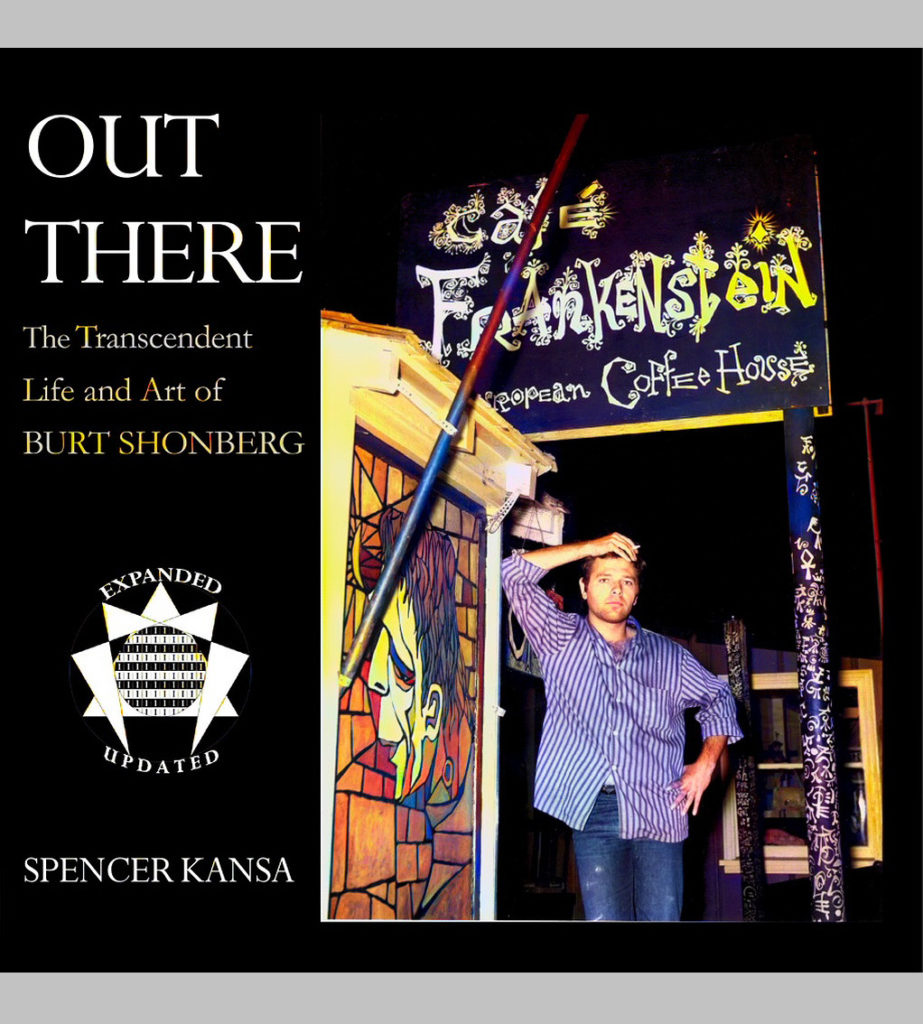
Category Archives: Biography
NakedTantra
Featured
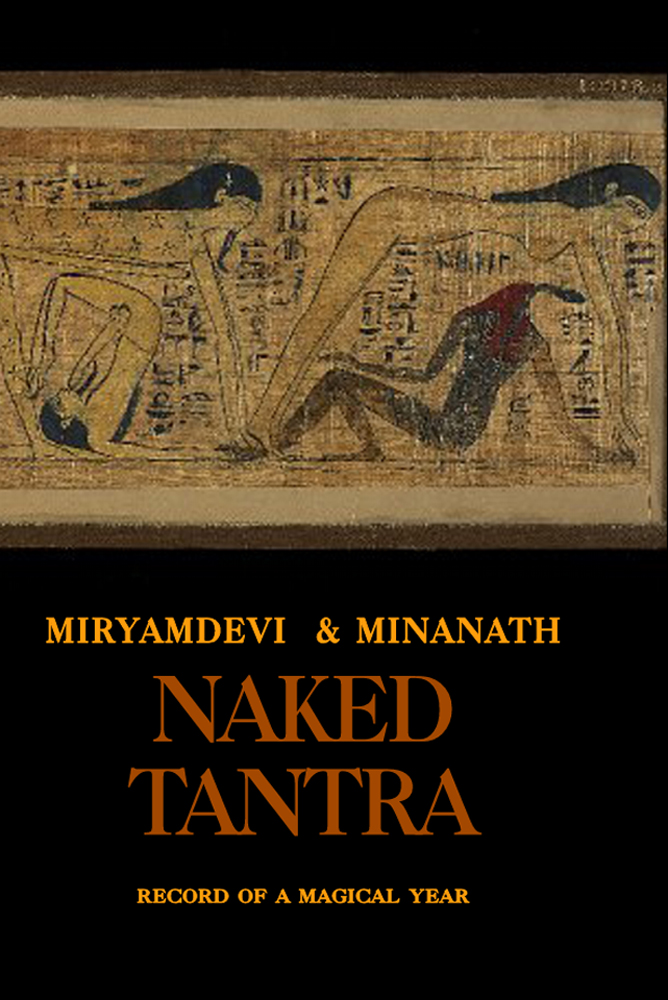
NakedTantra
Record of a Magical Year
By Miryamdevi & Minanath
978-1-906958-97-8
$24.00 / £15.00
Click Here for NakedTantra / USA
Click Here for Kindle edition / USA
Click Here for NakedTantra / UK
Click Here for Kindle edition / UK
There are many books on how to do magick, but not so many with stories about actually doing it and what happens. NakedTantra lays bare the inner states of the two brave souls involved in this extended magical work.
An experiment, two people, two countries, one mind, experimenting in tantra meta-magick, cosmic astral travel to the land of no boundaries, looking for the doors of perception.
Of necessity, the contents of this grimoire might be considered erotic. And, with that thought in mind, it might also be that the reader is occasionally aroused by our story as it progresses. Some might find this an unwanted intrusion, into what is otherwise an exploration of a magical world. Others we surmise will take this in good part, accepting that, a spoonful of sugar helps the medicine go down. To those who do not share these sensibilities, and are unmoved by what you are about to read, we offer our sincerest apologies.
Bulwer-Lytton
Featured
Occult Personality
John S. Moore
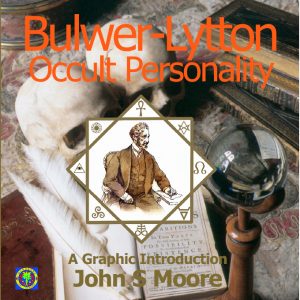
Bulwer-Lytton Occult Personality
John S. Moore
ISBN: 9781906958855, 166pp/bw & full colour illustrations.
£20+p&p / US$26.00+p&p
Click HERE for the UK edition
Click HERE for the USA & Elsewhere
—
Edward Bulwer, Lord Lytton, once the most successful novelist in the English speaking world, now unfairly neglected and even derided, was also the central figure in the underground culture of magic and the occult. With his esoteric studies he built a reputation for deep learning in the history and philosophy of this alternative tradition, as well as passing for an adept in his own right. His creative influence, especially through his occult fiction, was surprisingly far reaching.
The book sets the achievement of this nineteenth century magus into a large historical context, exploring the intellectual and other influences on him as well as movements he inspired. Some chapters discuss aspects of Bulwer’s life, while some explore people and ideas that influenced him and others those he influenced. His seminal role in several cultural movements has been largely forgotten, not least in his home country. This book offers an often unfamiliar perspective on the Victorian era and hopefully succeeds in provoking some questions about our own times.
With Bulwer as its focus, and employing a wealth of illustrations, it manages to provide a whirlwind tour of much occult and esoteric culture, from Iamblichus to Symbolist art and literature, Theosophy and modern psychedelia.
Watch John Moore’s presentation of Bulwer-Lytton Occult Personality
on YouTube
https://www.youtube.com/watch?v=iufOV7EmT0Y&feature=youtu.be
Pan’s Daughter
Featured
The Magical World of Rosaleen Norton
Revised and Greatly Expanded Edition
Nevill Drury

Pan’s Daughter
The Magical World of Rosaleen Norton
(Revised & Greatly Expanded Edition)
Nevill Drury
Format: Softcover/326 pp/48 illustrations.
ISBN: 978-1-906958-41-1
£22.99/US$32/AUD$36(+$8p&p)
Click Here for Pan’s Daughter / USA
Click Here for Pan’s Daughter / UK
Click Here for Pan’s Daughter / AU
During the 1950s and early 1960s the Sydney-based trance-artist and Pan-worshipper, Rosaleen Norton, was well known in Australia as ‘the Witch of Kings Cross’ and was frequently portrayed in the tabloid press as an evil ‘devil-worshipping’ figure from the red-light district. Norton attracted attention from both the public at large and also the local police for engaging in bizarre pagan sex-rituals with her lover, the poet Gavin Greenlees. Details of these activities would surface from time to time in the local courts when Norton was defending her metaphysical beliefs and seeking to defuse claims that her magical paintings and drawings were obscene. Norton was also associated with the scandal that eventually engulfed the professional career of renowned musical conductor, Sir Eugene Goossens who had arrived in Australia in 1947 and became a member of Norton’s magical coven six years later.
Norton dedicated her magical practice to the Great God Pan and to a lesser extent Hecate, Lilith and Lucifer. She was also intrigued by the visionary potential of Kundalini yoga, out-of-the-body trance exploration and Aleister Crowley’s Thelemic sex magick and combined all of these elements in her ritual activities.
Pan’s Daughter is the only biography of Rosaleen Norton and provides the most detailed and authoritative account of her magical beliefs and practices. First published in Britain by Mandrake in 1993, it is now reissued in a revised and expanded edition.
“Brilliantly researched…outrageous and inspiring”
Fiona Horne, author of Witch – A Personal Journey and Witch – A Magickal Year
“A fascinating study. Drury’s understanding of the occult and spiritual realms makes Norton’s art and life comprehensible” Tom Thompson, Sydney Morning Herald
Dr Nevill Drury (1 October 1947 – 15 October 2013) is best known for his publications on modern Western magic, shamanism and visionary art. For many years he worked in the Australian book industry as an editor and art book publisher and in 2008 he received his Ph.D from the University of Newcastle for a dissertation on the art and magical belifes of Rosaleen Norton.
Ithell Colquhoun
Featured
pioneer surrealist artist, occultist, writer and poet
(reprinted)
Eric Ratcliffe
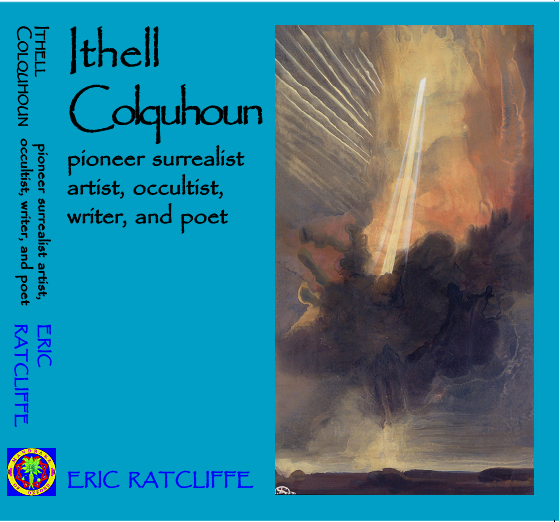
——————————————————————-
Ithell Colquhoun / UK / £30
——————————————————————-
Ithell Colquhoun / USA / US$40
——————————————————————-
Ithell Colquhoun
pioneer surrealist artist, occultist, writer & poet
Eric Ratcliffe
Format: Softcover/312pp/90 illustrations (25 colour).
ISBN: ISBN 978-1869928-98-8
£30/US$40
Subjects: Art/Art History/Surrealism/Occult/Magick/Biography.
–
The skills of Ithell Colquhoun in her main practice, that of artist and pioneer in this country of surrealistic art, have been long recognised. Additionally, other interests – alchemy, Earth-magic, active occultism, poetry, druidism, the pre-Christian pagan calendar, the history and membership of the Golden Dawn – and writing of and involvement in these interests by book publication and in a widely scattered field of correspondence, have created a miscellany of truly gargantuan proportion.
Eric Ratcliffe considered it was time to get together some of these pieces, to add something of what is known of Colquhoun’s early life and family history and to take the opportunity of listing a comprehensive calendar of her work and exhibitions. The result is neither strictly biographical nor a treatise on any one subject, but it is a first gathering of the roots, passions and multi-directions of this artist. It is a patchwork containing many launch-pads for exploration of the magical and mythical atmosphere which this artist existed in and created. Here therefore is a contribution towards solving a jigsaw and a wind-catch of the minor cyclones of lthell’s dedicatory interests, also serving as a record of her accomplishments in the art field.
REVIEWS
‘The subtitle of this book is: ‘Pioneer Surrealist, Artist, Occultist, Writer and Poet’, this multifaceted description captures the essence of who and what Ithell Colquhoun was about. Her connection to Cornwall is through the book The Living Stones, published in 1957, which was an early contribution to discovering the power of the Cornish landscape, prehistory and tradition and folklore. Even today, it continues to inspire people with its love for the ancient land of Cornwall…Ratcliffe’s biography made me want to go back and re-read The Living Stones, and no better thing could be said of a book such as this.’- Cheryl Straffon, Editor in Meyn Mamvro – Ancient stones and sacred sites in Cornwall – www.meynmamvro.co.uk
‘The author gives an excellent account of Colquhoun’s artistic career, explaining why she has been so overlooked (she stuck to her principles against the authoritarian demands of the British surrealist clique and consequently was expelled). Ratcliffe places proper emphasis upon the artist’s magical activities. She was a member of the OTO, Order of the Pyramid and Sphinx, Order of Holy Wisdom, Ancient Celtic Church and the Druid Order.
Despite having had the good fortune to read many of Colquhoun’s magical papers I learnt a great deal from this very well informed work. There is excellent bibliographical information including listings of unpublished typescripts and also as comprehensive as possible listing of her paintings and drawings.’
Ithell Colquhoun by Eric Ratcliffe, Mandrake of Oxford.
Reviewed by Ben Fernee @ Caduceus Books
‘Ithell Colquhoun was a pioneer surrealist artist, poet, writer, pantheist and occultist. Descended from Devonian ancestry, she was of Anglo-Indian birth and received her education in England at the Cheltenham Ladies College and later at the Slade School of Art in London.
After the war she moved to Cornwall where she spent the rest of her life. While at the Slade she became involved in Theosophical circles and then attempted, without success, to join Moina Mathers’ Alpha and Omega Lodge of the Hermetic Order of the Golden Dawn and Dion Fortune’s Fraternity of the Inner Light.
However during the 1950s she belonged to various occult groups including Kenneth Grant’s Typhonian OTO and Nu-Isis Temple, Dr WB Crow’s Order of the Holy Wisdom and Order of the Keltic Cross, Tamara Bourkhoun’s Order of the Pyramid and the Sphinx, as well as the Druid Order, the Cornish and Breton Gorsedd, the Ancient Celtic Church, Co-Freemasonry and the Fellowship of Isis.
This biography is profusely illustrated with many of Colquhoun’s paintings and also includes some of her writings and poetry. It is a fascinating study of a unique multi-talented woman who during her creative life contributed a great deal to both the artistic and occult fields. Recommended.’
Ithell Colquhoun, by Eric Ratcliffe.
Reviewed by Mike Howard in The Cauldron, issue 129, August 2008
Crowley
Featured
A Beginners Guide
John S. Moore & John Patrick Higgins
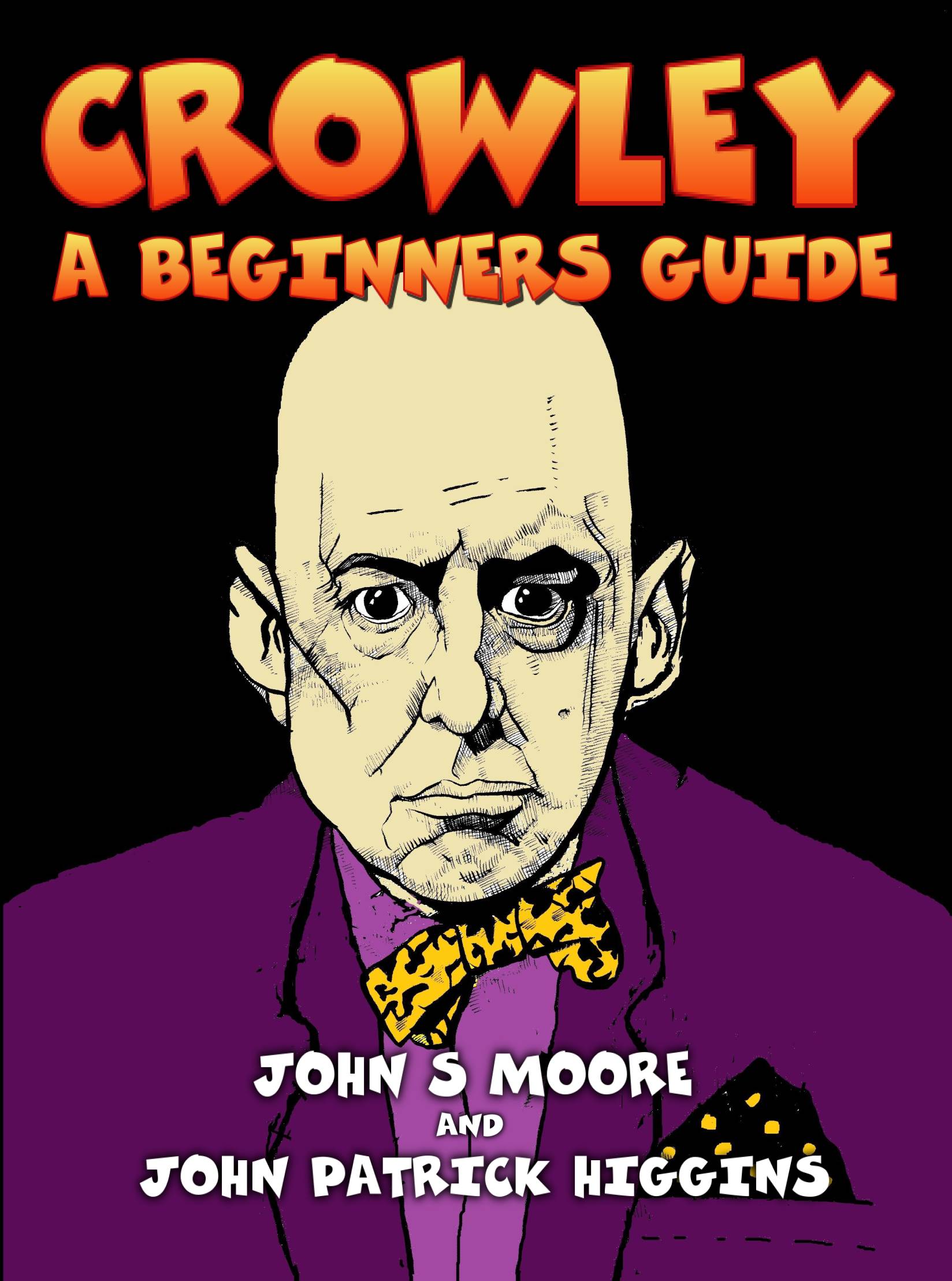
Crowley a beginners guide UK / £15.00
Crowley a beginners guide USA / US $22.00
Crowley, A Beginners Guide
John S. Moore & John Patrick Higgins
Format: Softcover/b/w Illustrated/154pp
ISBN: 978-1-906958-69-5
£15.00 /US $22.00
Subjects: Aleister Crowley/Thelema/Magick/Occult/Biography.
—–
“Do what thou wilt shall be the whole of the Law.”
Nearly seventy years after his death Aleister Crowley, the notorious Beast 666, is only just beginning to attract serious academic attention. Even so we would not expect to find him on any mainstream university courses; he is still too much associated with occultism. So, Crowley – A Beginners Guide is not your standard beginner’s guide.
“Let my servants be few & secret: they shall rule the many & the known.”
Readers may be surprised at the richness and complexity of his thought, as well as the extent of his influence. He needs background to be understood. Giving this opens fresh perspectives on much recent intellectual history.
Crowley – A Beginners Guide presents his main ideas in a straightforward and accessible format, with drawings and diagrams to place them in their historical context. It relates him to contemporary movements in art and scholarship. It describes his relationship to modernism and postmodernism, and his role in the counterculture of the sixties, as well as his continuing influence today. Interspersed are entertaining stories of his life and reputation.
Brilliantly illustrated by John Higgins, Crowley – A Beginners Guide, is a highly accessible guide to this fascinating, complex and controversial figure. It neither promotes nor condemns him, presenting hostile as well as favourable views of his character and achievement.
John S Moore is a freelance writer and independent scholar living in London. He is the author of Aleister Crowley: A Modern Master (Mandrake of Oxford, 2009) and Nietzsche – An Interpretation, (AuthorsOnline Ltd, 2011) and has written on Schopenhauer, Wittgenstein and Edward Bulwer-Lytton among others. More information at www.johnsmoore.co.uk
John Patrick Higgins is a writer and illustrator. He is the author of The Narwhal and Other Stories www.amazon.co.uk/Narwhal-other-stories-Patrick-Higgins ebook/dp/B007N6KJW8
He writes art criticism for various magazines and is Creative Director of Shot Glass Theatre Company www.culturenorthernireland.org/reviews/performing-arts/shot-glass. See also www.facebook.com
He lives in Belfast, which he continues to find extraordinary.
Read a review of Crowley A Beginners Guide from Magonia Review of Books pelicanist.blogspot.co.uk/2016/04/crowley-for-beginners.html
William Lilly: Magician, Astrologer & Adept
Link

William Lilly,
Magician, Astrologer & Adept
Peter Stockinger & Sue Ward
Foreword by David Conway
Format: Softcover, 252pp
ISBN: 978-1-906958-62-6
£14.99+p&p / US$26.00+p&p
Click HERE for the UK edition
Click HERE for USA & Elsewhere
Born less than a year before the death of Queen Elizabeth I in 1603, William Lilly lived during one of the most turbulent times in English history. Like so many of his generation, he had to deal with the plague, was drawn into the madness of the English Civil War and was forced to take sides, and witnessed the regicide of King Charles I. Lilly lived in a time of enormous religious and social upheaval, but his astrology remained the outer expression of a magical world-view, based on hermetic and neo-Platonic principles and rooted in the 16th century.
This book provides the reader with a thorough introduction to the world of William Lilly, the famous 17th century astrologer and magician. It brings together transcripts of his autobiography and of some of his most important works. It also includes Peter Stockinger and Sue Ward’s Monster of Ingratitude, an investigative journey offering new insights into the notorious contention between Lilly and the astrologer John Gadbury. Amongst other valuable information, the book contains:
* The Life of William Lilly, Student in Astrology
* Monster of Ingratitude
This research contains brief biographies of Lilly and Gadbury. It shows how their enmity began, developed and ended, including details of the rather one-sided pamphlet war. An in-depth study of published material, timelines and bibliographic entries of all primary sources used are also included and provide the grounds for a different explanation from that commonly proposed.
”The Last Magician is a very worthwhile work. Although some parts are hard going for the non-specialist, others are of value to anyone with an interest in Enlightenment esotericism and seventeenth-century English history in general. — Clive Prince.”
The Flying Sorcerer
Being the magical and aeronautical adventures of Francis Barrett, author of The Magus
Francis X. King
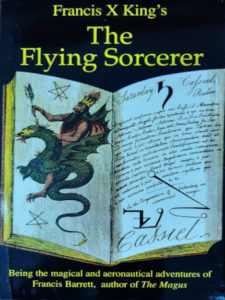
The Flying Sorcerer, Francis Barrett
Francis X. King
Format: Softcover
ISBN: 9781869928209
£15.00 / US$22.00
Subjects: Hermeticism/Biography/Magick/Occult.
Click HERE for the UK edition
Click HERE for USA & Elsewhere
–
The Flying Sorcerer is the only biography of an enigmatic 18th-century magus Francis Barrett, whose book The Magus or Celestial Intelligencer, laid the foundation of the current magical revival. He was the first author since the middle ages to compile a manual or ‘grimoire’ of magick. The Magus or Celestial Intelligencer is widely read and still capable of providing insight.
Francis King offers a fascinating picture of Francis Barrett, a man who lived on the frontier of technology, both in terms of the inner landscape and his pioneering experiments in balloon flight. It discusses his teachers, peers, and the subsequent progress of his disciples.
Magical Dilemma of Victor Neuburg
Jean Overton Fuller
(Magical Biography)

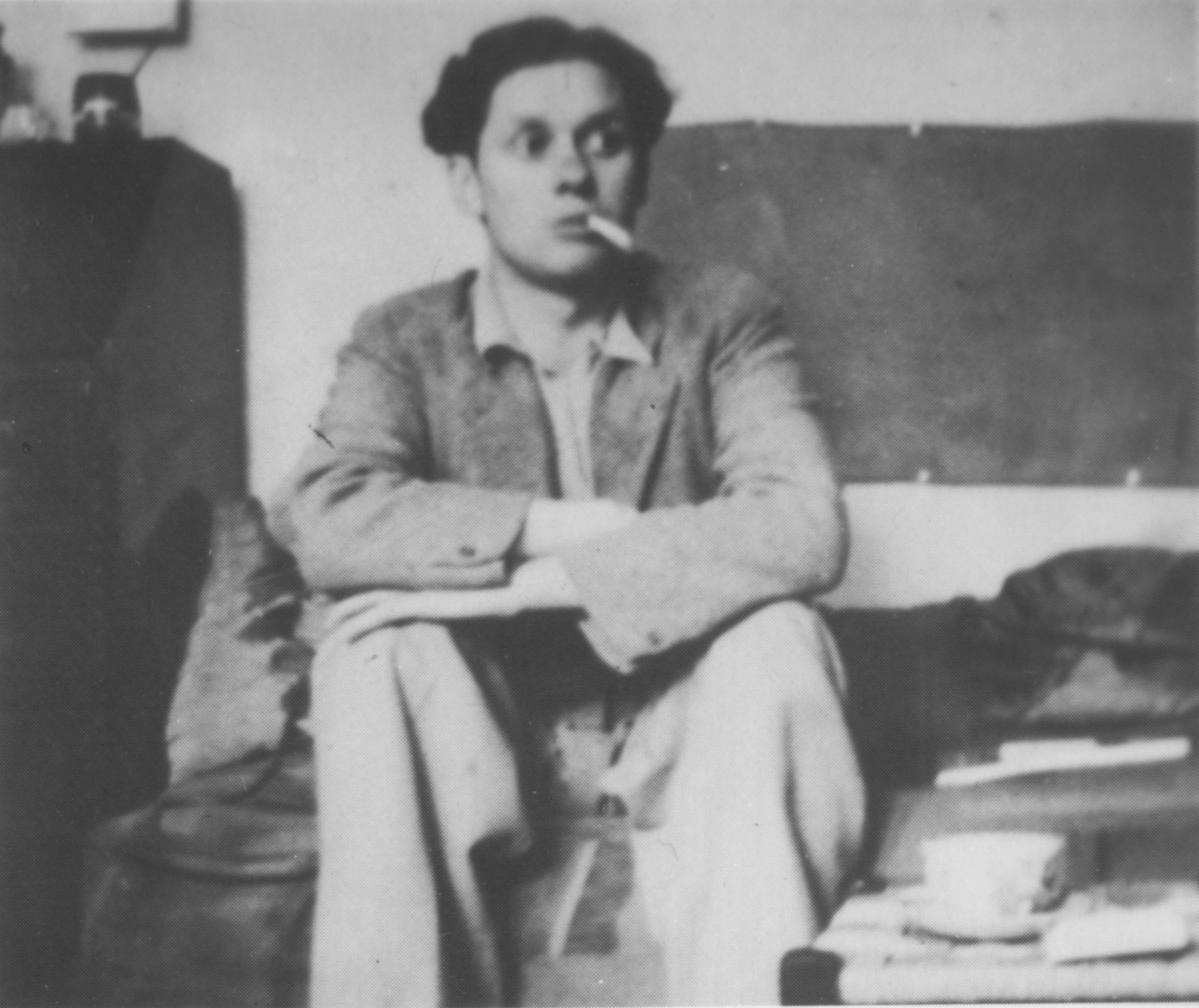 The Magical Dilemma of Victor Neuburg
The Magical Dilemma of Victor Neuburg
Jean Overton Fuller
Format: Softcover
ISBN:
£15.00 / US$24.00
Subjects: Biography/Aleister Crowley/Thelema/Magick.
The Magical Dilemma of Victor Neuburg is really two books in one:
The record of Victor Neuburg’s extraordinary journey to magical enlightenment. And the story of Aleister Crowley, the magus who summoned Neuburg to join
him in his quest.
‘The book opens with the author’s entry into the group of young poets including Dylan Thomas and Pamela Hansford Johnson. They gather around Victor Newburg in 1935 when he is the poetry editor of the Sunday Referee. Gradually the author becomes aware of his strange and sinister past, in which Neuburg was associated in magick with Aleister Crowley.
Contents: Beginnings / Mystic of the Agnostic Journal / Crowley and the Golden Dawn / Initiation / Magical Retirement / Equinox and Algeria / Rites of Eleusis / Triumph of Pan / Desert / Triangles / Moon Above the Tower / Templars and the Tradition of Sheikh El Djebel / Paris Working / The Sanctuary / Arcanum Arcanorum / Dylan Thomas
‘Those interested in Western occult history will welcome this revised and expanded edition of an important work first published in 1965.
Overton Fuller’s biography of Neuburg paints an intimate portrait of this complex character who was as much mystic as poet. A prominent figure in London’s literary bohemia in the 1930s, Neuburg encouraged such writers as Dylan Thomas, Pamela Hansford Johnson, Hugo Manning and many others, including Overton Fuller.
In his earlier days, Neuburg had been a disciple, magical partner and possibly even lover of Aleister Crowley during a period of ground-breaking magical experiments.
‘Vicky encouraged me as no one else has done,’ Dylan Thomas declared on hearing of Neuburg’s death. ‘He possessed many kinds of genius, and not the least was his genius for drawing to himself, by his wisdom, graveness, great humour and innocence, a feeling of trust and love, that won’t ever be forgotten.’ ‘ . . . there was a whiff of sulphur abroad, and all of us would have liked to know the truth of the Aleister Crowley’s legends, the truth of the witch-like baroness called Cremers, the abandonment of Neuburg in the desert.’
– Pamela Hansford Johnson
‘No dry biography this but an illuminating and compelling account of a multi-faceted personality who lived during an exciting period of occult and literary history. An absolute must-have!’
– (ME) In Prediction Magazine November 2005
—————————–
To mark the centenary of Dylan Thomas, here’s an extract from JOF’s book that narrates her first meeting with the soon-to-be-famous poet:
“We agreed to Zoists”: Dylan Thomas & the Occultist Victor Neuburg (Aleister Crowley’s lover & collaborator)
“We agreed to Zoists.
Runia wanted us to have badges, ‘so that one Zoist can recognize another, if you meet outside, or if we have provincial centres.’
There was a murmur of dissent. Some of us felt this thing was getting inflated. And we didn’t want badges. We weren’t boy scouts; just a few people who wanted to come here and sit and talk to each other on Saturday evenings.
‘All right, no badges,’ she said. ‘But it is agreed we have a name?’
It was agreed but there was no enthusiasm for the name, our feeling being for the informal. Before we left Runia made us cups of tea.
When eventually we broke up, and I stood again in the road outside, I felt I could tell my mother I had been among distinguished people. But the truth was I felt something else as well. I felt I had been in ancient Egypt and for this feeling I could find no explanation.
Not all of those who had been present on the first evening returned the following Saturday, but as I attended every week I began to know the regulars. Arriving soon after 8 (dinner at the hotel where my mother and I lived, was at 7, so it was a rush), I always found a certain number of people there already, though there was usually some time to wait until Vicky and Runia came from the inner room. It was in this waiting time that I had to find my feet, as it were among the other young ones. Nobody was ever introduced at Vicky’s. One just found out for oneself. I did not find the young men easy although they made efforts to draw me into the circle, for they assumed an acquaintance with modern poetry and political authors greater than I possessed; I could not always follow their allusions, and I had the feeling they all participated in a form of culture slightly strange to me. I was therefore grateful when a good looking young man, quiet mannered and of a more ordinarily civilized demeanour, settled himself beside me and asked, simply, ‘How did you come to Vicky’s?’
I told him about the circular letter I had received. He knew Geoffrey Lloyd had sent some out and asked, ‘What do you do when you’re not writing poems for Vicky? What’s your background, so to speak?’
I told him I had been on the stage since I was seventeen.
He said ‘Fancy our having an actress among us!’
‘What’s your name?’ I asked him.
‘William Thomas’, was what I first thought he said, but then he added, ‘It’s a special Welsh name.’
There could be nothing very special about William, and I puckered my brows.
‘You’ll never have heard it before,’ he said. ‘Nobody in England ever has. It should really be pronounced Wullam, in Welsh.’ Or was he saying ‘Dullan’?
‘It’s a special Welsh name,’ he repeated. ‘I shall have to spell it for you. D-Y-L-A-N. In Wales, it’s pronounced Dullan. But I’d been corresponding with Vicky for some time before I came to London, and when I arrived I found he had been calling me Dillan, in his mind. I thought if Vicky didn’t know how to pronounce it nobody in England would, so I decided to take it as the standard English pronunciation of my name. Otherwise I’d spend all my time telling people it was Dull and not Dill, and I think perhaps Dillan sounds more elegant than Dullan. Only Idris objects and thinks it’s frightfully fancy! Because he’s Welsh, too, and he knows! but now I’m getting even Idris trained to call me Dillan, though it’s under protest!’
‘What part of Wales do you come from?’ I said.
‘Oh, I only come from a small town. Swansea.’
Whereas I had previously felt myself to be the most naive member of a group otherwise composed of sophisticated, bohemian intellectuals, I now felt I had, vis-à-vis Dylan Thomas, at any rate, an advantage in being a Londoner. ‘I should have thought Swansea was a large town,’ I said. ‘I was near there all last summer. If you had been to the theatre at Porthcawl you would have seen me on the stage!’
‘No, I’m afraid I didn’t’ he said. ‘What a pity!’
Giving the conversation a turn he did not expect, I said, ‘Have you ever been down a mine?’
‘No.’
‘I have!’ I explained triumphantly. ‘Near Crumlin. I once played a January date in the Rhondda. Or more exactly the Ebbw Vale.’ I told him how I had persuaded the men at a pit to take me down the shaft, and how, having arrived at the bottom, I was given a lamp to hold and escorted along a passage which had been hewed through the coal to a point where it became so low that one would have had to proceed on hands and knees. I was shown a fault seam, which I felt with my fingers.
‘You have seen something in Wales which I haven’t!’ said Dylan. He explained that his home was some distance from the mining regions. He described the part of Swansea where he lived, with a detail I cannot now recall, except that it sounded salubrious and agreeable. His father was Senior English Master at the Grammar School. ‘Living where I do one doesn’t really see anything of all that,’ he said, with reference to my allusion to the coal mining (and depressed) areas. ‘Idris comes from the Rhondda,’1 he said. ‘I haven’t been into those areas.’ As though he had been slightly shamed by my adventure, he added, ‘Perhaps I ought to have done.’
‘It’s because you live there that you wouldn’t think of it,’ I said. ‘When one is touring one feels one must see everything in case one never comes again. When I was sixteen, my mother and I made a tour of Italy, Pisa, Rome, Naples, Capri, and back through Perugia, Florence and Milan. We felt we had to go into everything, even the smallest church we passed on any street. We realized we had never “done” London half as thoroughly because we took it for granted.’
I have no ‘outrageous’ sayings of Dylan Thomas to record. His conversation with me was perfectly drawing-room and unexceptional. I remember him as a polite young man. Friendly, but not at all presuming.
He told me the origins of the circle of which I now formed part. ‘First one and then another of us found our way to Vicky’s through entering into correspondence with him or something like that, and so a circle grew up around Vicky. We’re all very fond of Vicky.’ He explained that, ‘always reading each other’s names in print we began to wonder what the ones whom we hadn’t seen were like.’ So they had had the idea ‘of sending out circulars to everybody who was a contributor. He thought it had brought in some interesting people. ‘Well, it has brought you!’ Perhaps one could name some kind of a regular thing of it. ‘The only thing I don’t like is the name Zoists!’ he said.
I laughed and said, ‘It does sound a bit like protozoa, zoophytes and zoids!’
Dylan pulled a funny face.
‘We’re always called “Vicky’s children”,’ said Dylan. ‘It’s a bit sentimental, but I don’t think we shall ever be called anything else.’
It had been at the back of my mind while he was speaking that his name, as he had spelled it out, was one which I had read in the Sunday Referee in a context more important than that of the weekly prizes. I had not taken the paper regularly before I joined the circle, or I would have known the whole build-up. I said, ‘Aren’t you the winner of a big prize? I believe you’re one of the distinguished people here!’
‘It was through Vicky and the Sunday Referee that a book of my poems has been published,’ he said. He explained that a prize was offered twice yearly, part of which consisted in the publication of the winner’s poems in book form. ‘The first was awarded to Pamela Hansford Johnson. She isn’t here tonight. I was given the second of them.’ He said that Vicky had helped him pick out what he thought were the best of the poems he had written.
‘What’s it called?’
‘Just 18 Poems. It was published just before Christmas, and I think it’s doing quite well.’ He added, ‘I’m very grateful to Vicky. It’s a big thing for me. One’s first book is the most difficult to get published. Everyone says so. Now that I have one book published, it should be easier to get the next accepted, perhaps by an ordinary firm.’
My sentiment for Vicky was already so strong that I was slightly shocked.
Dylan Thomas saw it. ‘Vicky doesn’t expect us to stay with him!’ he said. ‘This is a nursery school from which we are expected to go out into the world. When we can get published elsewhere nobody is more pleased than Vicky!’
Just then the moment for which we had been waiting arrived. The door from the inner part of the house opened and our hosts came out to join us.
Vicky came straight up to Dylan and me. I did not know which of us the distinction was meant for but it gave me joy. He stood by my chair, looking down on us beamingly, and said to Dylan, ‘You’re entertaining this little lady?’
Dylan said, ‘I’ve been telling her something of the history of the Poet’s Corner.’
*********************************
Laugharne,
Carmarthenshire,
Wales
19 June 1940
Dear Miss Fuller
I haven’t heard anything from Vicky and Runia for years, until about a fortnight ago.
Then Pamela Johnson wrote to tell me that Vicky had just died. I was very grieved to hear it; he was a sweet, wise man. Runia’s address is 84, Boundary Road, NW8. At least, I suppose she is still there. I wrote her a letter, but I haven’t had a reply yet; probably she’s too sad to write.
Yours sincerely
Dylan Thomas
#occult #literarymodernism #aleistercrowley #victorneuberg #poetry #magick #mandrakeofoxford
Mystical Vampire
The Life and Works of Mabel Collins
Kim Farnell
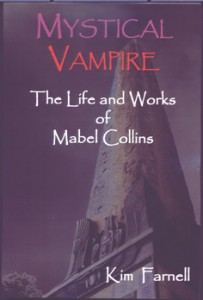
Mystical Vampire
The Life & Works of Mabel Collins
Kim Farnell
Format: Softcover
ISBN: 9781869928858
£15.00/US$26
Subjects: Biography/Theosophical History
Click HERE for the UK edition
Click HERE for USA & Worldwide
Mystical Vampire introduces a cast of remarkable characters:
- Mabel Collins: Theosophist, novelist, fashion columnist, journalist, and anti-vivisection campaigner.
- Madame Blavatsky: The extraordinary and influential Russian occultist and author, along with other eminent members of her Theosophical Society.
- Annie Besant: Social reformer and Theosophist.
- Robert Donston Stephenson: A suspect for Jack the Ripper and Mabel’s lover.
- Frances Power Cobbe: Social reformer, suffragist, and anti-vivisection campaigner.
- Charlotte Despard: Social reformer and anti-vivisection campaigner.
In the oppressive Victorian climate, Mabel Collins stood out as an independent woman. Known for her best-selling mystical text, Light On The Path, published by the Theosophical Society, Mabel’s life took a dramatic turn after her fallout with Madame Blavatsky. She continued her journey as an esotericist, traveller, and writer, passionately advocating for the abolition of vivisection and the welfare of helpless creatures.
***
‘”I highly recommend this book to anyone with an interest in Victorian society and the off-beat origins of many influential institutions on our lives today. Mystical Vampire presents fascinating ideas, such as the possibility of Annie Besant and Helena Blavatsky being more than just friends, making it a worthwhile investment. For Ripperologists, the sections on Collins and Stephenson alone are worth the price of the book, and there may be other gems in there, so it’s worth buying. Few books are as well-referenced and footnoted as this one, and Ms. Farnell has done an excellent job on her subject, Minna Mabel Collins.” – Howard Brown, Casebook: Jack The Ripper, the Web’s largest Jack The Ripper public archive www.casebook.org
”Kim Farnell has done devotees of gaslight and mediums a service in bringing Mabel’s world back to life.” – Gary Lachman – The Independent On Sunday.
